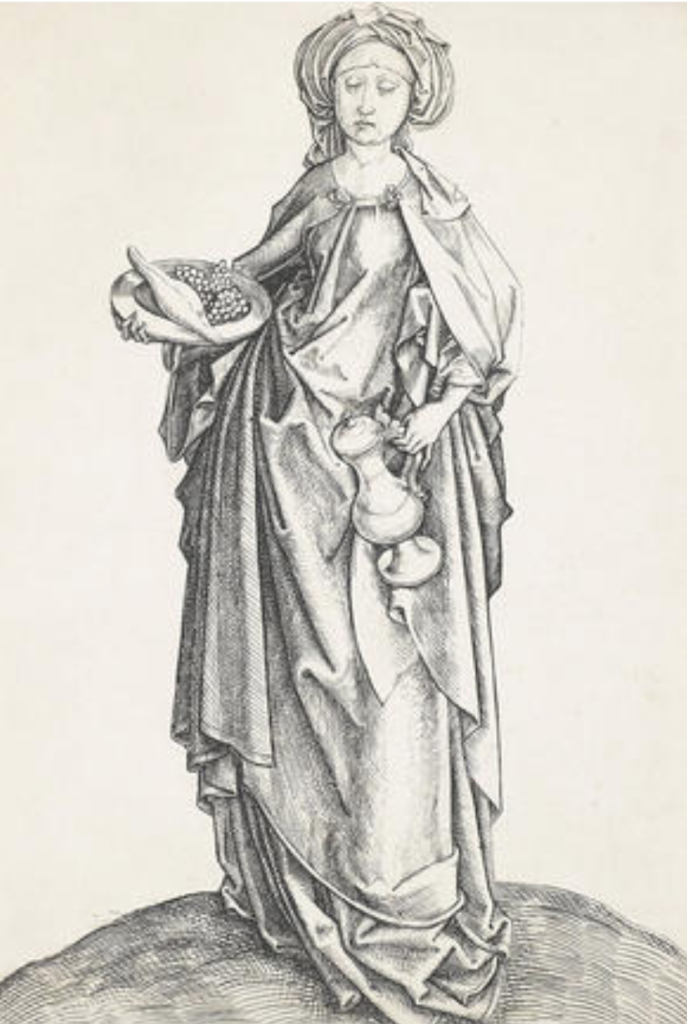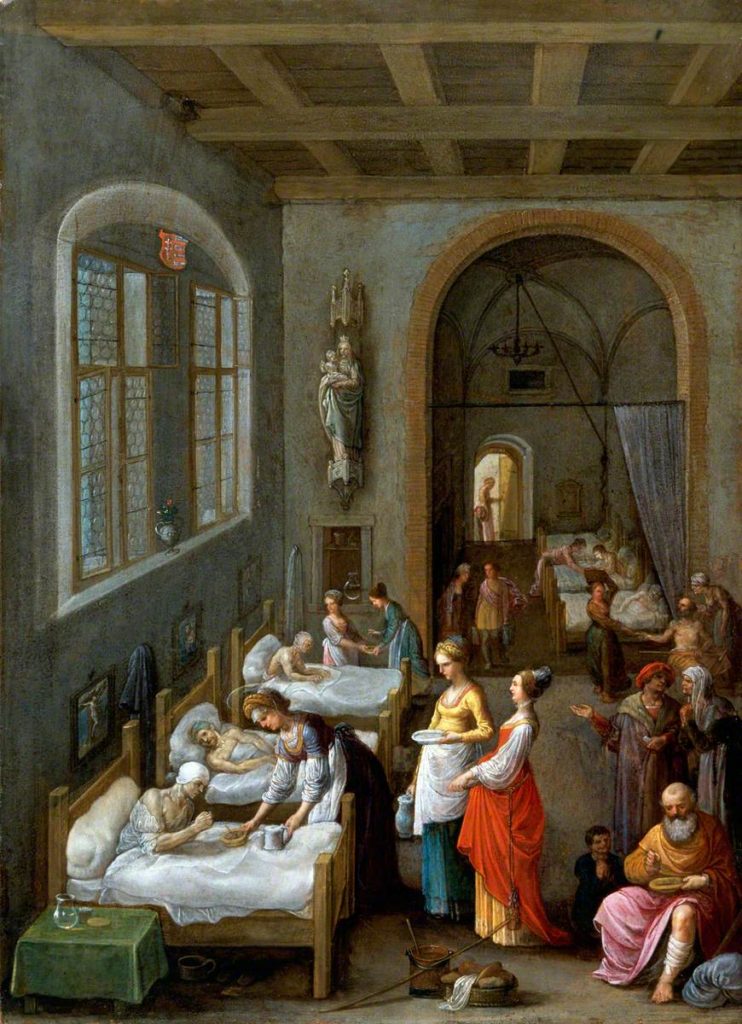Mother of the Poor

St. Elizabeth lived in the thirteenth century and was born the princess of Hungary and daughter of King Andrew II. From birth she was betrothed to Louis IV of Thuringia, whom she married at the age of 14. Right away, these young Christians set out on the path of charity and were well known for their dedication to the impoverished, but it was Elizabeth especially who devoted her entire life to serving the poor.
Even before Elizabeth was married, she shunned worldly things for the love of her Lord. It is said that as young as five years old, she detested children’s toys and instead found every excuse to pray in the little chapel nearby. She often denied herself the pleasures of food and drink, taking only enough simple food as was necessary.
In marriage, Elizabeth bore two children, and when pregnant with their third, she received news that her husband had died. Elizabeth, twenty at the time, was heartbroken, but her fervor for fasting and prayer only increased. When she received her dowry back, she used the money to build a hospital in Marburg where she would daily attend to the afflicted.
While she was still married married, Elizabeth came under the spiritual care of Konrad von Marburg. Konrad was a harsh father-confessor, and after Louis IV’s death, Elizabeth entered an even more extreme life of asceticism. She fasted and prayed nearly without ceasing. Eventually, it took a toll on her health, and she died at the age of 24 on November 19, 1231.
Elizabeth’s life was entirely dedicated to the Church through acts of charity and prayer. The form of her life was a stark contrast to worldly desires. Instead of working to gain influence and riches, Elizabeth spent her life in a perpetual movement toward lowliness and poverty, thus earning the name “mother of the poor.” While she herself would pray and fast, she saw to it that no man or woman was without provision.
To give a beautiful picture of her humility, we wanted to include just one of many tales about Elizabeth from the Golden Legend:
“Often, too, she spun wool in company with her servants, in order to receive the glorious fruit of these good labors, giving an example of true humility, and an alms to God out of the toil of her own body.”

Brief History
Elizabeth was very popular. We didn’t include any or the legends of the miracles after her death, but the Golden Legend shares dozens of miracles said to have occurred after Elizabeth’s death: healings, restorations, finding what was lost, etc. It isn’t surprising then, that the Church canonized her only four years after her death!
Especially notable to us Lutherans, Philip the Magnanimous of Hesse is a direct descendent of St. Elizabeth. If you will recall, Philip was a supporter of Martin Luther, deeply involved in the Diet of Augsburg where the Augsburg Confession was first presented, and instrumental in founding the Schmalkaldic League in 1531.
But perhaps Elizabeth is best known today for the legend of the loaves and roses. It is said that she was discreetly going to deliver a basket of bread loaves to the poor when she ran into her husband, who asked her what she was concealing under the basket cover. Amazingly, when she revealed its contents, there were no longer loaves but roses! For this reason, St. Elizabeth is often depicted holding a basket of roses as she is at the St. Elizabeth Church in Budapest (pictured below).

Collect
Hear us, O God, our Savior, so that we, who rejoice in the feast of Blessed Elizabeth, may learn from her the spirit of loving devotion; through Jesus Christ, Thy Son, our Lord, who liveth and reigneth with Thee and the Holy Ghost: ever one God, world without end. Amen.
Lessons
Epistle
Gospel
Resources
Issues Etc. interview with the Rev. Dr. Larry Rast on St. Elizabeth of Hungary
Propers found in Daily Divine Service Book: A Lutheran Daily Missal, edited by the Rev. Heath Curtis
References:
1. Voragine, Jacobus de. The Golden Legend: Reading on the Saints. Vol. 2. Translated by William Granger Ryan. Princeton Press. 1993.
2. Weedon, William. Celebrating the Saints. Concordia Publishing House. 2016.
3. Article “Our Saint – Elizabeth of Hungary” from St. Elizabeth Catholic
Images:
1. Saint Elizabeth of Hungary, attributed to ‘Master I.E.’, England, c.a. 1400.
2. Saint Elizabeth of Hungary Bringing Food for the Inmates of a Hospital, Adam Elsheimer, Germany, ca. 1598
3. The St. Elisabeth Church in Budapest, Attila Terbócs, 2008.




